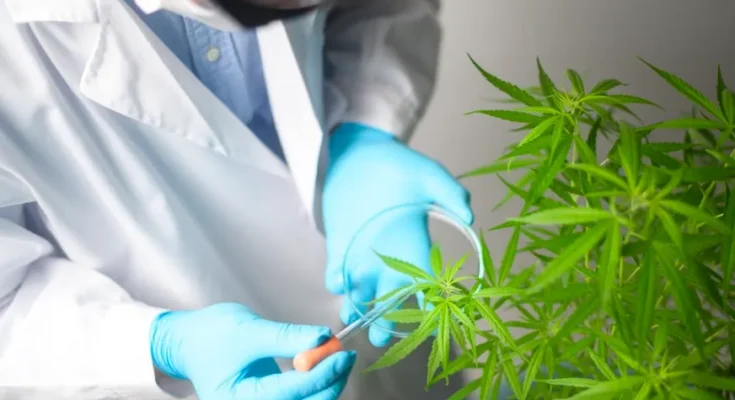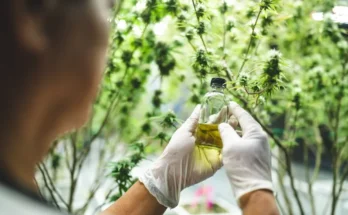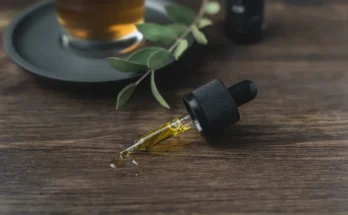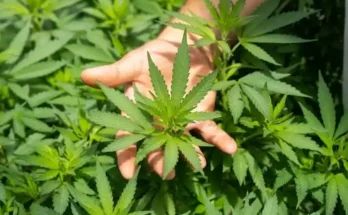In an era where stress is the new norm and well-being has become a buzzword, more people are turning to natural solutions to regain balance. Among these, CBD—short for cannabidiol—has emerged as a superstar in the world of wellness. Hailed for its potential to soothe, heal, and harmonize without the high, CBD has sparked curiosity, conversation, and countless product lines across the globe.
But what exactly is CBD? How is it extracted from the plant it originates from? And why has it gained such enormous popularity in such a short time? Let’s journey into the green heart of this extraordinary compound and uncover its story.
What is CBD?
CBD, or cannabidiol, is one of over 100 naturally occurring compounds called cannabinoids found in the Cannabis sativa plant. Unlike its more infamous sibling, THC (tetrahydrocannabinol), CBD doesn’t cause a “high.” Instead, it interacts with the body in subtler, yet powerful, ways.
CBD primarily works by influencing the endocannabinoid system (ECS)—a complex cell-signaling system present in all mammals that regulates sleep, mood, immune function, pain response, and more. Rather than overstimulating receptors like THC, CBD gently nudges the ECS toward balance and homeostasis.
The magic of CBD lies in its versatility. Whether taken as an oil, cream, edible, or capsule, it seamlessly integrates into wellness routines, offering gentle relief and restoration.
The Origins:
CBD is derived mainly from hemp, a cousin of the marijuana plant. While both are varieties of Cannabis sativa, hemp is naturally low in THC and rich in CBD. This makes it the ideal source for extracting the compound legally and safely, especially in countries with stringent cannabis regulations.
Though the modern CBD market feels trendy, humans have been cultivating hemp for thousands of years for fiber, food, and medicinal purposes. Only recently, thanks to modern science and shifts in public perception, has CBD stepped into the spotlight as a standalone therapeutic agent.
CBD Extraction:
Turning hemp into CBD oil is not as simple as squeezing juice from a fruit. It’s a sophisticated process that ensures purity, potency, and safety. Several methods exist to extract CBD from plant material, and each has its own strengths.
CO₂ Extraction
This is considered the gold standard in CBD extraction. In this method, supercritical carbon dioxide is used under high pressure and low temperatures to isolate and preserve cannabinoids. It yields highly pure CBD with no toxic residue, making it ideal for medical-grade products.
CO₂ extraction is precise and clean, but it’s also costly, requiring advanced equipment and expertise. This method is favored by reputable brands that prioritize quality over cost.
Ethanol Extraction
Ethanol, a high-grade alcohol, is another common solvent used to extract CBD. It effectively draws cannabinoids and terpenes from the plant but may also bring unwanted compounds like chlorophyll, which can affect taste and color.
However, with proper refinement, ethanol extraction can produce high-quality CBD suitable for a wide range of products. It’s a bit more accessible and cost-effective than CO₂ extraction.
Oil Infusion
This is one of the oldest and most natural extraction methods, often used in homemade or artisanal products. Here, raw hemp is heated and infused into a carrier oil (like olive or coconut oil), which absorbs the CBD.
Though less potent and not as scalable for mass production, oil infusion preserves many beneficial plant compounds and is beloved by DIY enthusiasts.
Types of CBD Products:
Once extracted, CBD is transformed into various forms to suit different needs and preferences. Each product type offers a unique experience, and the choice depends on desired effects and delivery speed.
CBD Oil and Tinctures
These are typically taken under the tongue for quick absorption. They offer flexible dosing and are ideal for those seeking fast relief from anxiety, insomnia, or pain.
CBD Edibles
Gummies, chocolates, and drinks infused with CBD provide a fun, discreet way to enjoy its effects. Digestion takes longer, so the onset is slower but often lasts longer.
Topical CBD
Creams, balms, and salves are used for localized relief, especially in cases of sore muscles, joint pain, or skin conditions. They don’t enter the bloodstream but work through the skin’s receptors.
CBD Capsules
Perfect for people who prefer a measured dose without taste or texture concerns, capsules are easy to integrate into daily supplements.
Vaping CBD
CBD vape oils offer near-instant effects through inhalation. While fast-acting, vaping has stirred health debates, so quality and caution are essential.
The Many Benefits of CBD:
CBD’s rise in popularity is not just a marketing success—it’s backed by science and supported by millions of anecdotal stories. Though research is still evolving, the current understanding of CBD’s advantages is promising.
Natural Stress Relief
CBD’s most celebrated benefit is its calming effect on the nervous system. It’s widely used to ease anxiety, manage daily stress, and promote a sense of mental clarity without sedation.
Sleep Support
By relaxing the mind and reducing pain or discomfort, CBD can improve sleep quality. It may help those struggling with insomnia or irregular sleep patterns to achieve deeper rest.
Pain and Inflammation Management
CBD’s anti-inflammatory properties make it a favorite among people with chronic pain, arthritis, or post-exercise soreness. It targets pain receptors without the addictive risk of opioids.
Skin Health
Thanks to its antioxidant and anti-inflammatory effects, CBD is increasingly used in skincare products to treat acne, eczema, and premature aging. It soothes irritation and promotes balance in the skin.
Neuroprotective Potential
Early research suggests CBD may benefit neurological conditions like epilepsy, Alzheimer’s disease, and multiple sclerosis. In fact, the FDA-approved drug Epidiolex uses CBD to treat severe epilepsy in children.
CBD and Legality:
One of the most common questions surrounding CBD is its legal status. In many countries, CBD derived from hemp (with less than 0.3% THC) is legal for sale and use. However, laws vary widely by region and are evolving rapidly.
It’s crucial for consumers to understand their local laws and to purchase from transparent, lab-tested sources that provide detailed ingredient information.
Conclusion:
CBD is not a miracle cure, nor should it be treated as one. But it is a powerful, natural tool for supporting well-being in a world that often feels overwhelming. As research deepens and product innovation continues, CBD is likely to become a mainstay in personal health and wellness routines.
Whether you’re looking to manage stress, sleep better, reduce pain, or simply bring a little more calm into your day, CBD offers a gentle, holistic path toward balance. In a fast-paced world, nature still has answers and CBD may just be one of the most beautiful among them.




